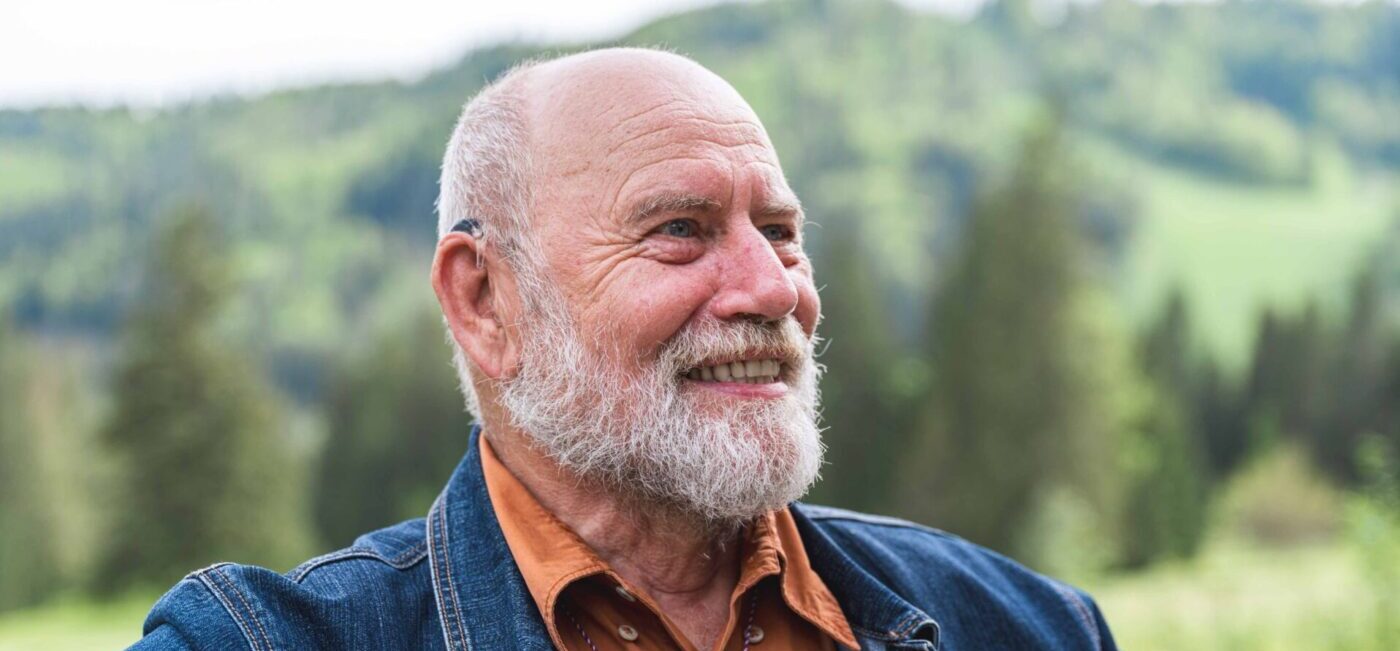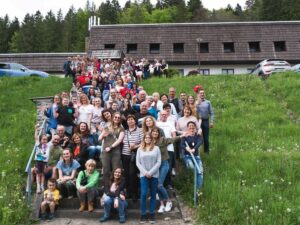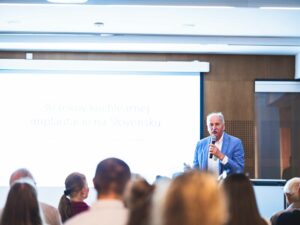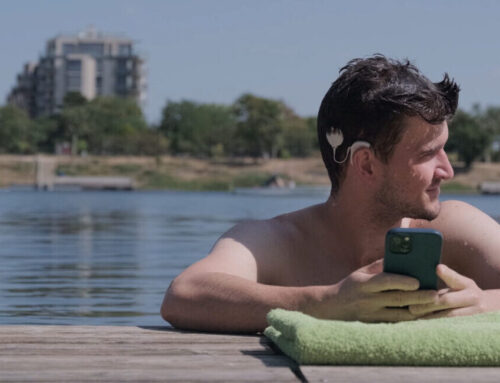CI users in Slovakia celebrate leading CI surgeons
Thanks to the initiative of Prof. Dr. Milan Profant from the University Hospital Bratislava, a child received a cochlear implant for the first time in Slovakia in 1994. Users, relatives and clinicians celebrated this anniversary together in Tále in central Slovakia at the beginning of May.
Eva Kohl

The handful of parking spaces are full. On the driveway, a few young people fall into each other's arms. They laugh and jump for joy together. Two pre-school children cross with energetic strides, each clutching a Mellie plush elephant. At the entrance, an older couple - you can see a CI processor above their ear under their pinned-up hairstyle. The small ski and golf hotel Stupka is located in Tále, in the middle of Slovakia. It is once again a meeting place for CI users of all ages, as well as clinicians from Bratislava University Hospital. This year they are celebrating the 30th anniversary of cochlear implantation in Slovakia.

The traditional Slovakian user meeting celebrated 30 years of cochlear implantation in Slovakia this year. ©Michal Gajdos
"The first patient was a 12-year-old boy who became deaf after medication with strong antibiotics. His mother was a doctor, a neurologist. She found out about cochlear implants and asked the Ministry of Health to finance an implantation in Germany." This was shortly after Slovakia and the Czech Republic had separated from the previously common state structure in 1989. The ministry asked for the expertise of the already renowned ENT specialist Prof. Dr. Milan Profant. Instead of financing an operation abroad, he recommended inviting a CI surgeon to the University Hospital in Bratislava to carry out the implantation. "Today, the CI patient from back then is a lecturer in nuclear physics at the University of Bratislava," says Prof. Profant. Since then, Profant and his team have performed around 600 implantations in Bratislava and, as a guest surgeon, more than 600 further implantations in other countries: on three continents, in 27 cities in 18 different countries. The clinic in Košice has also been offering cochlear implants for some time now.
"For some ENT colleagues, however, cochlear implantation was so strange at the beginning that it took many, many years to convince them," the CI specialist recalls. Meetings of Slovakian CI users from 1996 onwards were also helpful in convincing them: First short meetings in Píla and Dubník, both near Bratislava, and then in Tále in its current form with overnight stays. "The whole implant team from our clinic goes to the meeting. Many patients were implanted as small children. Now they are young men and women, fully integrated into the world of hearing people. This is really encouraging - not only for me, but also for the rest of our team: when we can see and grasp the actual result of our work."
Being part of the hearing world - thanks to cochlear implants!
Some of these young CI users talk about their experiences at the meeting, such as Martin Bulko, whose deafness led to the first implantation in 1994. In order to be able to use a better technology of a new processor, Bulko also decided to have the second side implanted in 2019, which fortunately had recently become possible in Slovakia. He explains that the new processor was not compatible with his old implant. The CI manufacturer MED-EL guarantees that every new audio processor is also compatible with all older implant models. However, this is apparently not always guaranteed for implants and processors from other manufacturers.
Martin Ďuriška calls his second birthday the day of his cochlear implantation. He was only 21 months old at the time. "I remember sitting on the floor with my mother; on a red blanket." They practiced twice a day for 30 minutes until Martin was ready for school and enrolled at a regular school. Today, the 26-year-old IT security expert is grateful that communication is not just a key part of his everyday working life. At the end of his talk, Ďuriška becomes philosophical: "Am I deaf? Am I hearing? I am who I am!" He shows a photo with his friends. All hearing; how he is hearing thanks to CI.
Becoming well-informed and confident

Renowned ENT specialist Prof. Dr. Milan Profant has performed well over a thousand cochlear implants in Slovakia and around the world over the past 30 years. ©Michal Gajdos
Archaeologist Gabriel Fusek also shares his hearing story. Already an adult, he had gradually lost his hearing since 1972 before he received a CI in 2006 after three years of bilateral deafness. After activation, he was looking forward to his first day at work. "But I didn't do much work: After all, the office is the ideal place to gossip," he laughs. His hearing loss came as no surprise, as family members in his family have been deaf for generations. A genetic peculiarity is the cause. Over 400 different genetic predispositions for hearing loss are known to date, explains Doz. RNDr. Lukáš Varga, PhD. in his lecture. The CI surgeon will present the latest findings on genetic deafness and thus begin the series of specialist lectures.
In Tále, the impact of clinical work on the reality of life is captured, while the Summer Days in Velden provide an opportunity to meet like-minded people, build self-efficacy and gather information: Despite their different origins, the two initiatives have a lot in common: lots of communication, new information and shared fun. We are delighted to welcome Prof. Dr. Milan Profant, the specialist who initiated and played a key role in shaping implantation and the annual patient meeting, as a new honorary member of the CIA!






